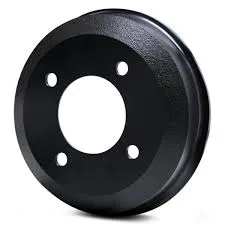
-
 Afrikaans
Afrikaans -
 Albanian
Albanian -
 Amharic
Amharic -
 Arabic
Arabic -
 Armenian
Armenian -
 Azerbaijani
Azerbaijani -
 Basque
Basque -
 Belarusian
Belarusian -
 Bengali
Bengali -
 Bosnian
Bosnian -
 Bulgarian
Bulgarian -
 Catalan
Catalan -
 Cebuano
Cebuano -
 Corsican
Corsican -
 Croatian
Croatian -
 Czech
Czech -
 Danish
Danish -
 Dutch
Dutch -
 English
English -
 Esperanto
Esperanto -
 Estonian
Estonian -
 Finnish
Finnish -
 French
French -
 Frisian
Frisian -
 Galician
Galician -
 Georgian
Georgian -
 German
German -
 Greek
Greek -
 Gujarati
Gujarati -
 Haitian Creole
Haitian Creole -
 hausa
hausa -
 hawaiian
hawaiian -
 Hebrew
Hebrew -
 Hindi
Hindi -
 Miao
Miao -
 Hungarian
Hungarian -
 Icelandic
Icelandic -
 igbo
igbo -
 Indonesian
Indonesian -
 irish
irish -
 Italian
Italian -
 Japanese
Japanese -
 Javanese
Javanese -
 Kannada
Kannada -
 kazakh
kazakh -
 Khmer
Khmer -
 Rwandese
Rwandese -
 Korean
Korean -
 Kurdish
Kurdish -
 Kyrgyz
Kyrgyz -
 Lao
Lao -
 Latin
Latin -
 Latvian
Latvian -
 Lithuanian
Lithuanian -
 Luxembourgish
Luxembourgish -
 Macedonian
Macedonian -
 Malgashi
Malgashi -
 Malay
Malay -
 Malayalam
Malayalam -
 Maltese
Maltese -
 Maori
Maori -
 Marathi
Marathi -
 Mongolian
Mongolian -
 Myanmar
Myanmar -
 Nepali
Nepali -
 Norwegian
Norwegian -
 Norwegian
Norwegian -
 Occitan
Occitan -
 Pashto
Pashto -
 Persian
Persian -
 Polish
Polish -
 Portuguese
Portuguese -
 Punjabi
Punjabi -
 Romanian
Romanian -
 Russian
Russian -
 Samoan
Samoan -
 Scottish Gaelic
Scottish Gaelic -
 Serbian
Serbian -
 Sesotho
Sesotho -
 Shona
Shona -
 Sindhi
Sindhi -
 Sinhala
Sinhala -
 Slovak
Slovak -
 Slovenian
Slovenian -
 Somali
Somali -
 Spanish
Spanish -
 Sundanese
Sundanese -
 Swahili
Swahili -
 Swedish
Swedish -
 Tagalog
Tagalog -
 Tajik
Tajik -
 Tamil
Tamil -
 Tatar
Tatar -
 Telugu
Telugu -
 Thai
Thai -
 Turkish
Turkish -
 Turkmen
Turkmen -
 Ukrainian
Ukrainian -
 Urdu
Urdu -
 Uighur
Uighur -
 Uzbek
Uzbek -
 Vietnamese
Vietnamese -
 Welsh
Welsh -
 Bantu
Bantu -
 Yiddish
Yiddish -
 Yoruba
Yoruba -
 Zulu
Zulu
Comparison of Drum Brakes and Disc Brakes in Automotive Applications
Drum Brake vs. Disc Brake A Comprehensive Comparison
When it comes to automotive braking systems, two main types dominate the market drum brakes and disc brakes. Both have their unique characteristics, advantages, and limitations, making them suitable for different applications and driving conditions. Understanding these differences can help vehicle owners make informed decisions about their braking systems.
Basic Design and Functionality
Drum brakes consist of a hollow drum that rotates with the wheel. Inside the drum, brake shoes are placed and press against the drum's inner surface when the brake pedal is engaged. This friction slows down the vehicle. The simplicity of this design makes drum brakes generally less expensive to produce and install.
On the other hand, disc brakes utilize a flat disc or rotor that spins with the wheel. When the brakes are applied, brake pads clamp down on the rotor, generating friction to slow the vehicle. This system provides more effective heat dissipation and is less prone to fading under heavy use, making disc brakes a popular choice in modern vehicles.
Performance and Efficiency
Drum Brake vs
. Disc Brake A Comprehensive ComparisonIn contrast, drum brakes can experience heat buildup, leading to brake fade—a reduction in stopping power that occurs when the brakes become overheated. This limitation makes drum brakes less suitable for high-performance applications or vehicles that require frequent heavy braking.
drum brake vs disc brake

Maintenance and Durability
In terms of maintenance, drum brakes are generally more challenging to service. Their enclosed design makes it difficult to inspect the components and replace the shoes. Additionally, the presence of more parts, such as springs and adjusters, can complicate repairs. However, drum brakes may experience less wear than disc brakes in lighter-duty applications since they are usually used on the rear of budget cars or older models.
Disc brakes, while offering better performance, can be more expensive to maintain and replace due to the cost of rotors and pads. However, they are generally easier to inspect and replace, as most parts are accessible. The longevity of disc brakes can also be attributed to their design, which typically does not suffer from the same wear issues as drum brakes.
Applications in Different Vehicles
Due to their strengths and weaknesses, drum brakes are commonly found in older vehicles, economy cars, and the rear wheels of many trucks and SUVs. This setup takes advantage of their cost-effectiveness while utilizing disc brakes on the front wheels where stopping power is more critical.
Modern vehicles, particularly those designed for performance or safety, predominantly use disc brakes, often on all four wheels. This trend has grown due to advancements in technology and materials that have made disc brakes more affordable and efficient.
Conclusion
In summary, the choice between drum brakes and disc brakes comes down to specific needs and vehicle applications. Drum brakes are cost-effective and reliable for low to moderate driving demands. However, for enhanced performance, safety, and maintenance ease, disc brakes are often the preferred option. As automotive technology continues to evolve, the dominance of disc brakes is likely to solidify, leading to safer and more efficient vehicles on the road. The key for drivers is to evaluate their driving habits, vehicle type, and braking needs to select the most appropriate braking system for their safety and performance requirements.
-
What Are Drum BrakesNewsJul.07,2025
-
Understanding Brake Drum MaterialNewsJul.07,2025
-
Semi-Trailer Brake Drum: A Key Component for Extreme Loads and Long-Distance TransportNewsJul.07,2025
-
Drum Brake Pads for SaleNewsJul.07,2025
-
Brake Drums for SaleNewsJul.07,2025
-
Brake Drum ManufacturerNewsJul.07,2025
-
Aluminum Brake Drums: The Future of High-Performance CarsNewsJul.07,2025
